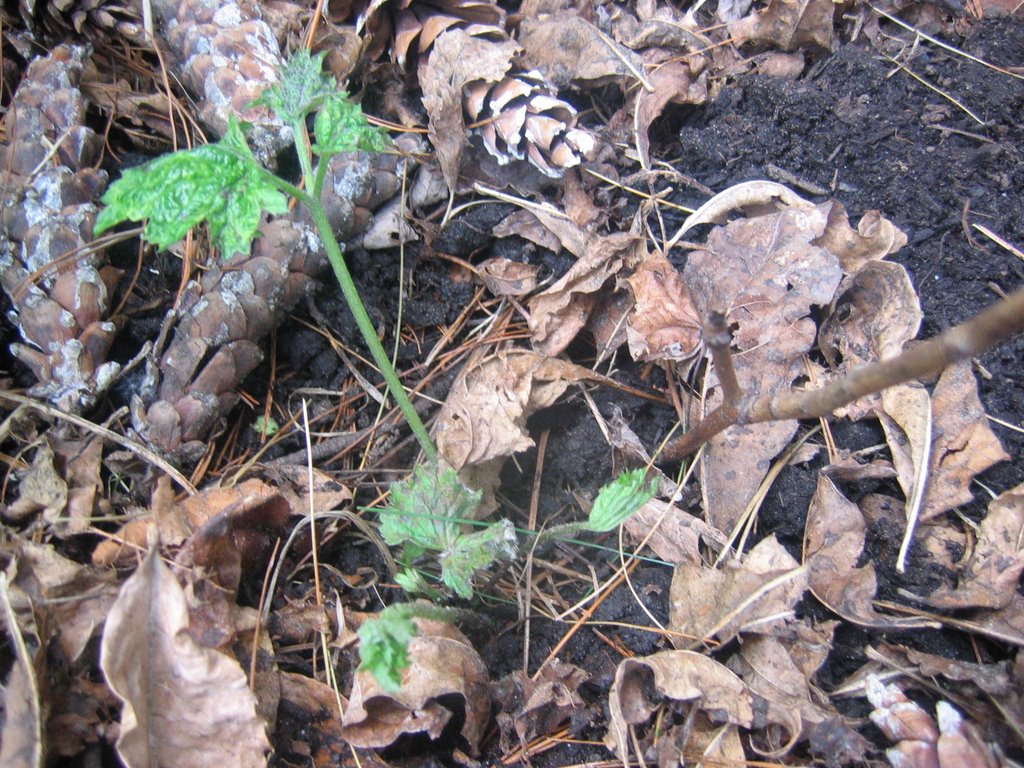One day about 20 years ago, my husband came back from buying pesticide and announced, "The guy at the store said earwigs will arrive next year." Huh? Well, "the guy" was right. Apparently these little darlings got off a ship from Japan and worked their way slowly across the continent. The next year I saw my first earwig, and although I'm not particularly squeamish about bugs, it grossed me out. Familiarity breeds contempt, as they say, and I'm no longer grossed out by them (OK, just a little), but they certainly don't inspire affection. They are on the extremely short list of things that I can kill without the slightest twinge of remorse. (For those of you who are unhealthily curious, houseflies, mosquitoes and lily beetles are the rest of the list. I even feel sorry for slugs, if you can imagine it.)
Now a variety of experts will insist that earwigs feed on decaying vegetable matter and aphids and are therefore beneficial. They are probably right most of the time. But if earwigs are short of the appropriate decaying materials, or if temptation is just too strong, they are only too happy to reduce any tender foliage and a number of flowers to lace. I wish I'd had an expert with me the night I went out to do battle with the slugs that were eating my baby marigolds down to a stub and found them covered in earwigs instead. They are also fond of coleus, salvia, nasturtiums (especially the flowers), monkshood flowers, pepper plants (not deterred by hot ones) and just about anything with thin enough leaves. And this is a list just from my personal experience.
There are several ways of dealing with earwigs. I generally ignore them until they start causing damage, because in small numbers they don't do enough harm to bother with them. But when I find leaves reduced to lace, I take action.
Earwig patrol: I go out around 10:00 at night with a flashlight and a one litre spray bottle filled with a 10% ammonia solution plus a teaspoon of dish detergent. I do the rounds of damaged plants, spraying any earwigs and slugs I find. The ammonia kills the slugs on contact, and the soap will kill the earwigs within a few minutes. I'm inclined to believe that they leave some kind of chemical trail like ants, because if I do the rounds a second time, I will find a fresh crop of earwigs chomping in the identical places, right down to the precise leaf. You can also do this with a bowl of soapy water and knock both slugs and earwigs into them, but that requires three hands or a willing partner in pest hunting, both of which tend to be in short supply for me. A flashlight mounted on a hard hat would help, but the neighbours think I'm weird enough already.
Diatomaceous earth: I sprinkle this anywhere I'm reasonably sure the earwigs will be crawling, with my favourite place being under potted plants on the patio where they will often hide out in the daytime.
Traps: The easiest that I know of, (and as you may have noticed, I am a great fan of easy) is to partially sink a shallow container, like a tuna can, in the soil, with a layer of soya sauce and a layer of cooking oil. The smell of the soya sauce apparently attracts them and the cooking oil makes it impossible for them to get out and probably smothers them. Anyway, if I've got an earwig infestation going on, it will be full of dead earwigs in the morning.
The Earwig Stomp: Put on your favourite dance music (optional) and stomp on them as they skitter across the patio or sidewalk. You won't get great numbers this way, but it's emotionally satisfying and burns off calories. Do wear shoes...







